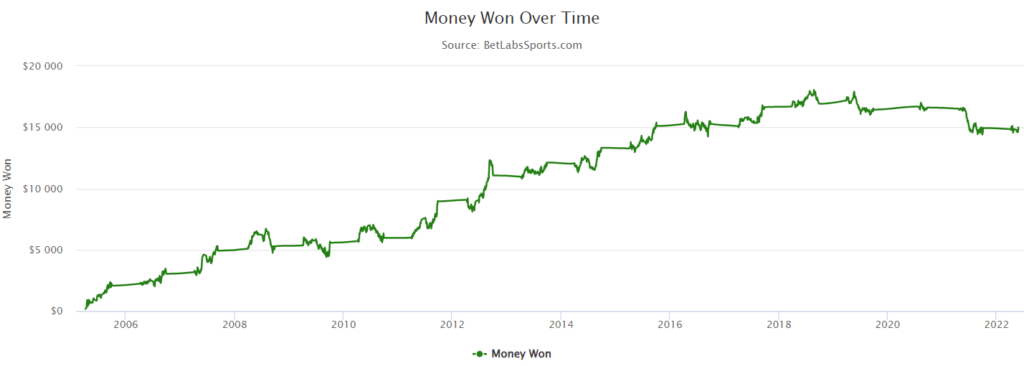Analytic bettors, like myself, are always looking for angles to bet. What is a betting angle? An angle is simply a trend that has been seen with some consistency over time that appears to be profitable if bet against a sportsbook. Betting on angles should be done with extreme caution. That said, I’ve created a step-by-step guide to help determine if your trend has some validity.
Finding a Betting Trend
Step one is a easy enough. You need to find a betting trend and create a hypothesis to test that trend. Finding betting trends can be done in a variety of different ways. With myself, I’ll typically see some rumblings about an angle on a blog or Twitter and look to test it out myself. In a recent blog, we questioned if there is a trend in betting NHL unders? This idea came from reading an article on Sporttrade’s blog.
Good Practices and Common Mistakes
Before getting into the elements of testing, it’s important to discuss good practices and common mistakes that can be made in the analysis. Here are five basic rules that an analyst would be privy to follow to get the best results from their analysis.
Rule 1: Test the correct hypothesis
Choosing the correct hypothesis sounds easy enough, but it is a shockingly common mistake that is made. Creating the null and alternative hypothesis is the first thing students are taught in Statistics 101. There is an obvious reason for this. If you get the first step wrong, then the rest of your analysis will end up being completely meaningless.
Rule 2: Is the sample size large enough?
It is very easy to be fooled into thinking that a short-term trend is emblematic of a long-term trend. There is an infinite amount of data and trends that can be found in the universe of sports. Thus, it’s very easy to be fooled by a trend that is really just a statistical aberration that was created by randomness.
Rule 3: Is there a logical reason that the trend is happening?
Here, we get into some more advanced statistical concepts. To further protect against getting fooled by a random statistical anomaly, one should put their thinking cap on. If a reasonable explanation can’t be made for the trend in the data, then it’s best to throw out the idea.
Rule 4: Is the trend consistent over time?
Checking a trend over time is another fail-safe method that should be used when applicable. The more consistent the trend is, the more likely it is to be a solid candidate for betting. Long-term trends that end up failing over time could be the result of the sportsbooks taking notice. Hence, our next rule…
Rule 5: Does the sportsbook have the trend built in?
Here, we have the most common misconception in the trend betting universe. Just because a trend may be occurring doesn’t mean that the sportsbooks haven’t caught on to it and priced it in. Consequently, if one is betting a trend that has already been priced in, then they are going to be losing money.
An Example and Conclusion
Below, we have an example of a trend that hits on a few of the rules that are listed.

Contrarian betting against the underdog in Major League Baseball over time.
This graph represents the ROI of betting the underdog in contests where the public betting tickets were overwhelming on the favorite. We can see that the trend appeared to work very well over time until around 2018 when the trend turned negative. There are a few different ways to break down this trend, but there is one conclusion that seems to fit best. Basically, I would venture to guess that the sportsbooks got better at adjusting their numbers in games with heavy underdogs. Thus, this conclusion falls under rule #5 that the sportsbooks have figured out the trend. Consequently, I would no longer bet this trend.
Hopefully, this starter pack for trend testing will get you on the road to better betting!